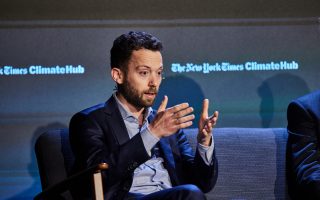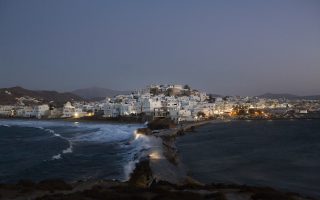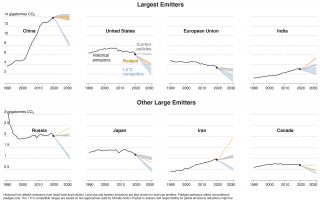Hundreds of companies promised to help save forests. Did they?

When a shopper in New York, say, plucks a Milky Way bar from a grocery store shelf, that shopper becomes the final link in a long chain that might have started on a patch of land in Ghana, where a tropical forest recently stood.
About 80% of the trees razed each year in the tropics are cleared to make space for growing cocoa, soybeans, palm oil and cattle that are the raw materials for chocolate, cereal, leather seats and thousands of other products. Ten years ago, some of the world’s largest companies, including Coca-Cola, Kellogg’s, Walmart and Mars, pledged to change their practices to help end deforestation by 2020. Some, like Nestle and Carrefour, went even further, saying they would eliminate deforestation from their supply chains altogether.
The 2020 deadline arrived, and some companies reported advances toward their goal. No company, however, could say it had eliminated forest destruction from its supply chain. Many others did not even try, said Didier Bergeret, sustainability director for the Consumer Goods Forum, an industry group of more than 400 retailers and manufacturers that organized the pledge. And annual deforestation in the tropics, where trees store the most carbon and harbor the most biodiversity, has lately been on the rise.
Do companies know what’s in their supply chains?
Many companies that committed to achieving “net zero” deforestation at first assumed the goal could be accomplished by buying from certified sustainable sellers, said Justin Adams, director of the Tropical Forest Alliance, an organization that helps companies meet their commitments. Looking back, Adams said, that was a naive approach to a complex problem.
For one thing, companies have to figure out exactly where their commodities come from. Mars, for example, is one of the world’s largest users of cocoa, which it buys from suppliers like Cargill. But those suppliers buy their cocoa, too, and at the beginning of the chain are the growers, some of whom are small farmers in Ivory Coast, Ghana and elsewhere. By the end of 2020, Mars said that it was able to trace about 43% of its cocoa to specific farms.
The company has had better luck mapping its palm-oil supply chain. When it did, it discovered that its oil came from 1,500 palm-oil mills, a number the company described as “far too complex to manage.” It has since reduced that number to 87. Along with a nonprofit organization called the Earth Equalizer Foundation, it uses satellite imagery to monitor land use on the plantations it sources from to ensure they aren’t cutting down forest.
Nestle reported in 2020 that its suppliers of palm oil, pulp, soy, sugar and meat were 90% deforestation-free. The company did some on-the-ground and satellite monitoring, but the determination largely drew on the fact that the commodities came from “low-risk regions” like Europe or the United States, where there is unlikely to be deforestation for products like soy. The company did not include cocoa or coffee in its original goal but said those crops would be part of its next effort to reach zero deforestation in 2025.
If companies can’t track a commodity’s origin, they can’t be certain that it was grown without eliminating trees. As The New York Times recently documented, ranchers in Brazil operating on illegally deforested land sold at least 17,700 cattle over 3 1/2 years to intermediaries, who then sold them to giant meatpackers. The original illegal farm did not appear in the supply chain documents. All of these factors make it difficult to rate the success of companies’ efforts.
Are there other ways to make a difference?
The companies that have voluntarily made progress on this front are in the minority, but some are pushing for these standards to be more widely adopted, and for governments to enact legislation that would force change across the entire industry.
Laws and public pressure have already made a difference. Brazil is backsliding now – a result of President Jair Bolsonaro’s aggressive development policies in the Amazon – but just a few years ago, it was being hailed as a conservation success story.
Between 2004-12, deforestation in the Brazilian Amazon fell by 84%. Brazil brought more of the forest under legal protection and stepped up enforcement of illegal logging laws. In 2006, following an uproar from groups like Greenpeace, the Brazilian government also brokered a voluntary moratorium with major soy buyers like Cargill, which significantly reduced deforestation for soy.
“What Brazil did to reduce deforestation could happen in other countries, and has happened to some extent in Indonesia,” said David Gibbs, research associate at the World Resources Institute. “But those reductions in deforestation are always potentially temporary and can be reversed.”
“So in that way,” he added, “Brazil is both a hopeful tale and a cautionary tale.”
In Indonesia, tropical forests and peatlands fell to the palm oil industry, which exploded in response to biodiesel incentives in the US and Europe. The catastrophic environmental damage that followed galvanized new efforts to limit the clearing and burning of forest. Indonesia’s annual deforestation rate is now the lowest it has been in nearly 20 years, according to Global Forest Watch.
This striking reversal shows what can happen with enough motivation. But recovering from damage is not nearly as easy as inflicting it. New trees can be planted, but it takes decades for trees to develop the “photosynthetic machinery” needed to sequester carbon at high rates, said Mark Harmon, a forest ecologist at Oregon State University.
“It is not an instantaneously renewable resource,” he said.
What do promises accomplish?
There is cause for hope, said Nadia Bishai of CDP, a nonprofit group that tracks and ranks companies that have the greatest influence on tropical deforestation. In the past, biodiversity was the main argument for preserving tropical forests. But “forests have become central to the climate discussion,” she said. And trees’ carbon sequestering powers motivated European Union rules aimed at curbing deforestation as well as the recent pledge by leaders of more than 100 countries, including Brazil, China and the United States, to end deforestation by 2030. The signatory countries are home to about 85% of the world’s forests, making it the most sweeping agreement yet on forest conservation.
“I think we’re a bit more hopeful this time around,” Bishai said. “This collective action is the key for the future.”
As companies’ 2010 pledges make clear, a vow is not an outcome. But it can at least point the way.
[This article originally appeared in The New York Times.]






